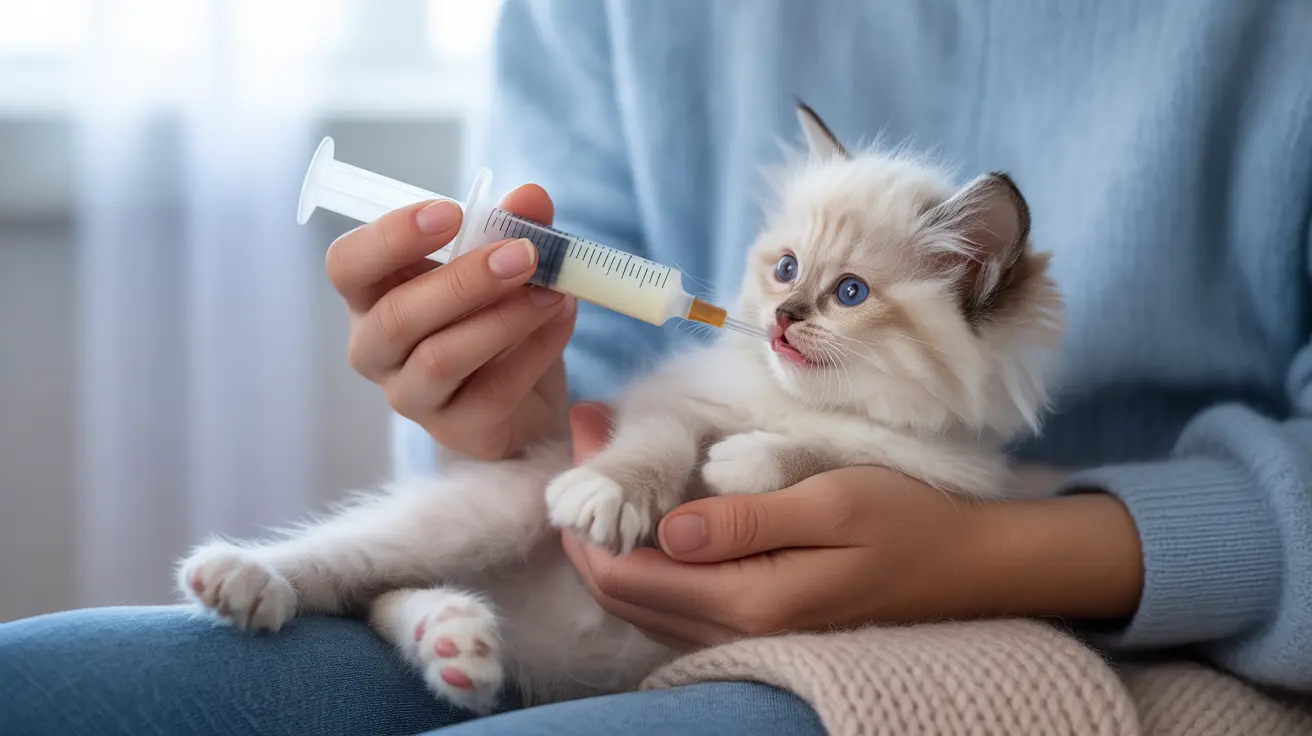When Is Syringe Feeding Necessary?
Kittens may require syringe feeding in several situations:
- Orphaned or abandoned newborns
- Illness or injury affecting eating ability
- Rejected by mother
- Failure to thrive
- Post-surgical recovery
- Refusal to eat for more than 24 hours
Essential Equipment and Preparation
Before beginning the syringe feeding process, gather these crucial supplies:
- Appropriate-sized oral syringe (3cc for newborns, 6cc for 2-week-olds)
- Kitten milk replacer or liquified wet food
- Clean towel for wrapping
- Warm water
- Cleaning supplies
- Digital scale for weight monitoring
Proper Syringe Feeding Technique
Follow these steps for safe and effective feeding:
Position and Restraint
Keep the kitten in a natural feeding position - belly down, head slightly elevated. Never feed a kitten on its back. Wrap them securely in a towel to prevent struggling while maintaining comfort.
Food Administration
Insert the syringe into the side of the mouth, aimed toward the cheek rather than directly back. Deliver food slowly, one drop at a time, allowing the kitten to swallow between drops. Monitor for any signs of distress or difficulty.
Feeding Schedule and Amounts
Follow these general guidelines for feeding frequency:
- 0-2 weeks: Every 2-3 hours, including overnight
- 2-4 weeks: Every 3-4 hours
- 4+ weeks: Every 4-6 hours
Safety Precautions and Warning Signs
Watch for these critical warning signs during feeding:
- Coughing or gagging
- Milk coming from nose
- Resistance to feeding
- Lethargy after feeding
- Difficulty breathing
Monitoring Progress
Track these key indicators of successful feeding:
- Daily weight gain (10-15 grams per day is ideal)
- Regular urination and defecation
- Alert and active behavior between feedings
- Steady improvement in feeding response
Frequently Asked Questions
How do I safely syringe feed a newborn kitten without causing choking or aspiration?
Always position the kitten belly-down with head slightly elevated. Insert the syringe from the side of the mouth, aimed toward the cheek. Feed one drop at a time, allowing the kitten to swallow completely between drops.
What type and size of syringe and formula should I use for syringe feeding kittens of different ages?
Use 3cc syringes for newborns, 6cc for 2-week-olds, and 10-12cc for older kittens. For formula, use kitten milk replacer for unweaned kittens and liquified wet food for older ones.
How often and how much should I syringe feed an orphaned or sick kitten to ensure proper nutrition?
Newborns need feeding every 2-3 hours, including overnight. The amount varies by age and weight, but generally starts at 3-4cc per feeding for newborns, increasing as they grow.
What are the signs that a kitten is having problems during syringe feeding and how should I respond?
Watch for coughing, gagging, milk coming from the nose, or difficulty breathing. Stop feeding immediately if these occur and consult a veterinarian.
How do I prepare kitten formula or wet food properly for syringe feeding to avoid clogs and choking?
For formula, follow package mixing instructions exactly. For wet food, blend with warm water until completely smooth with no lumps. Test the consistency through the syringe before feeding.
Remember, while syringe feeding can be lifesaving, it should ideally be done under veterinary guidance. If you're unsure about any aspect of kitten care, always consult with a qualified veterinary professional.






